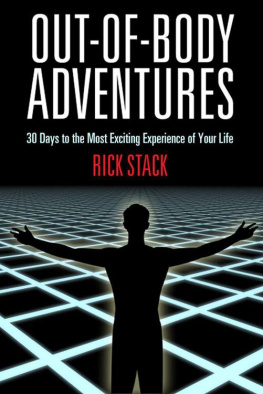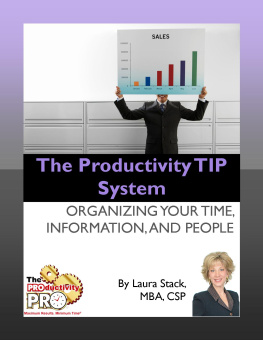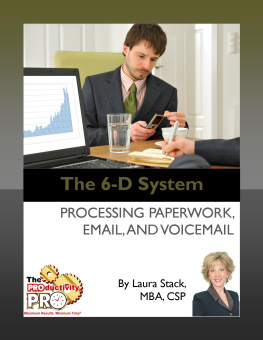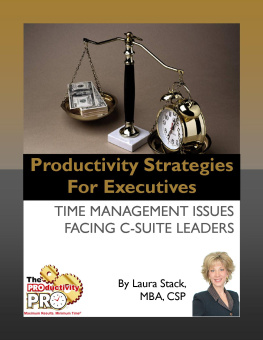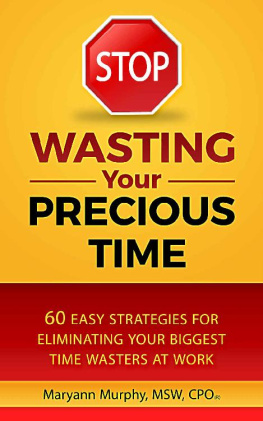Tableof Contents
LEAVE THE OFFICE EARLIER:
How to Strike a Balance BetweenWorkplace
Productivity and Employee Burnout
How many of you want to get out of the office earlier? Well,with the strategies in this ebook, you can cut down on the number of hoursyoure working and help your employees do the same.
These strategies will help you increase employee retentionand morale, and at the same time keep results where they are, at the veryleast. Ultimately, your charge is to offer training and programs that increaseemployee productivity. You wont have very happy customers if productivitygoes down. Remember, the title up there is not Leave the Office Early. We are not talking about playing hooky here. We need to do our work andput in our time.
Im sure that many of you have noticed that working hourshave climbed steeply in the past few years, and a 40-hour work week is prettymuch a myth. When we see people working 50, 60, or 75 hours a week or more, wehave to figure out how to have a life. Are you finding that some of your keyemployees are leaving your organization in droves in search of a better life? There have been many studies that have shown that as the economy improves,well see people jumping ship, saying, Ive had enough. Have you hadenough?
In this ebook, Ill discuss ways that you can facilitatesome cultural shifts within your organization, and act as a change agent toachieve the mutual goal of productivity from organizational and humanperspectives, so that you both win.
Ive been studyingproductivity exclusively since 1987. Its all I do. I write, speak andresearch productivity. I hail from Highlands Ranch, Colorado, the Gateway ofDenver. I have three kids who, this writing, are nine, ten, and 14. So justlike many of the people in your organizations and many of you, I have a life, Ihave kids, I have a significant other, I want to volunteer and go tochurch...but I have to work. Im sure that youre the same. But so many peoplehave felt, recently, like they live to work instead of working to support theirlifestyle.
Background
Productivity is the measure of how much an employee cangenerate per hour. Thats a measure of speed how fast people are working foreach hour of input given an hour of output. Lets look at some productivitystatistics from the U.S. Department of Labor. In 2002, there was a 4.7% gainin productivity over the previous year. In 2003, it was 4.5% increase. Productivity has increased at a similar pace in the years since. We haventseen productivity gains like this since 1949 to 1951.
Were seeing tremendous boosts in productivity largely dueto technology, downsizing...and fear. Have you been afraid to quit a job in adown economy? There might not be something out there for you. So as a group,we are complying with a high level of demand that organizations and HR arerequesting of employees.
The long-term benefits of high productivity are positive;and if you study it economically, youll see that this is true.
You dont have to hire as many people.
You can increase salaries (which you may not see yet).
Companies do not raise prices.
It should be a win/win/win for the employer, the employee,and the economy, though we havent seen this model followed yet. In the shortterm we have tons of work. We have employees with incredibly long hours whoare having a hard time balancing their lives. This results in low morale, andsometimes high turnover.
Cigna, the insurance company, did a great study called"Worried at Work." Among other things, they discovered thefollowing:
44% of employees said their jobs were more stressful than a yearago.
45% have considered leaving their job in the last year, haveleft, or plan to.
Retention will become a key issue. Worker shortages will berealized and employees will leaves in droves in search of a better way.
When I go into organization,I have to figure out: How can we approach productivity from a win/winperspective?
You will present a contract tothe organization by:
1. Determiningthe key people. If we had a brain drain and lost some really important people,who would those people be? When you have a star performer, you tend to givethem more work. These people are being overwhelmed and burned out. You mustidentify them. You need to help and support those who are committed, havepassion, love what they do, and are putting in heavy hours. Help them witheliminating bad habits and reducing hours to a manageable level.
2. Instituting productivity training. Learn to create the sameresults but do it in less time. You cannot lower the bar on whats beingproduced in an organization. Some programs take time, some as long as 10months to a year. The results will be higher morale, higher retention, and betterjob satisfaction. You can provide a very tangible benefit to employees bydoing this.
Cultural Norms That Are Hard to Change
Inevitable, you will encounter some problems in trying toimprove productivity. Some existing norms are very difficult to change, andyou will struggle with them greatly in working to increase productivity. Hereare a few tough norms you can expect to face.
1. Buttsin seats mentality. If you arent there and I cannot see you, you must notbe productive! But the truth is that an employee who works hard for eight hoursis more productive than one who just twiddles his thumbs or works casually for12 hours. It doesnt matter how many hours the butt is in the seat. Justbecause youre there doesnt mean youre producing.
2. Latehours. Today, these are often a norm. At MCI, work hours for salariedemployees were typically 7 am to 7 pm. That was expected. I came in to dotraining, and I noticed a disturbing trend. When people would come to work at7 in the morning they would wave at the boss and say, Hello, Im here. Thenthey would go to their desks...and do nothing at all. They would get theirlatte, chat with friends, check email, read the newspaper, and so on. Therewas no significant work being done at all within this department.
Around 9 oclock people wouldkick in and get to work. They would gain momentum slowly. They would put offa lot of work until after lunch. After lunch, their energy level was low. Thecrisis happens at 5 oclock...and they still have work to do. There was realwork going on at 5 oclock. This becomes a self fulfilling prophecy in yourculture because that person is saying, Im going to be here until 7 anyway. You would work differently if you knew you were targeting an earlier work day.
It took almost 9 months to shiftthat mindset and phenomenon. They got to work at 8, got their work done by 5,and went home. If theres trivial stuff left on the list at 5, you leave! Youend up feeling really good about your work.
3. Oldmanagement ideas have done a great disservice. These ideas teach peoplethat the number of things you do determines your productivity. This is nottrue. If you have 10 things to do in a day and two are really important,do you do the eight trivial things and leave the two important ones? If youdo, that doesnt mean that you were productive. If you just did four insteadof eight or nine, or if the two you did were the most productive, you may haveaccomplished more, and it was a better day. People are used to checking thingsoff the list. It feels good, so were trained to check things off. Thismentality must be changed, and it is a big process.
4. Thereare fears that if I cannot see you, you are not working. Its a difficultfight. Theres a slow shift now to people working one to two days from home,and it is recognized that if you have the personality to do it, it can reallybe productive.







